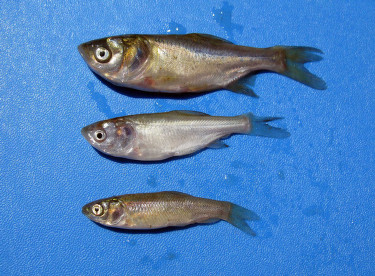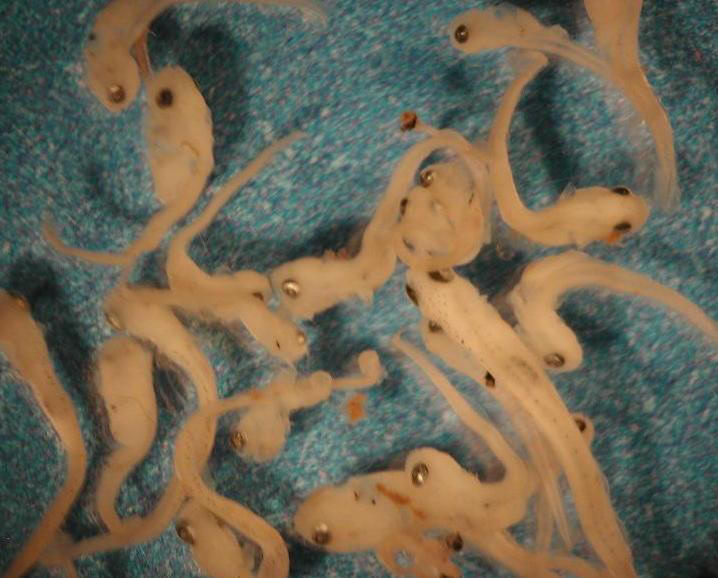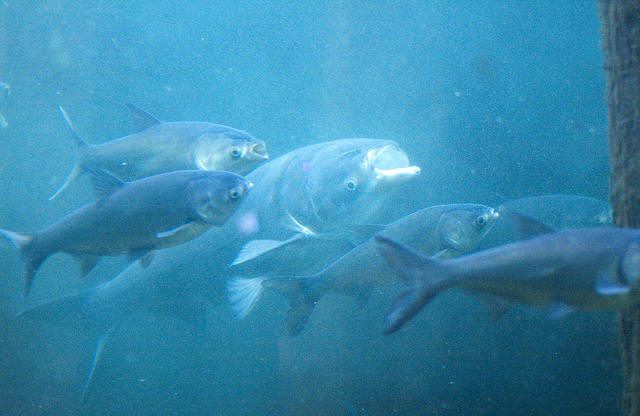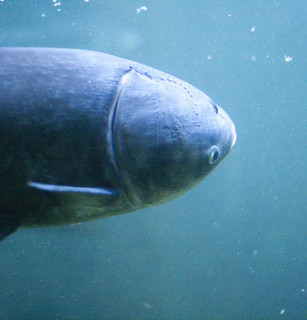Reproduction
As a species, Bighead carp go through sexual reproduction as many other organisms do. In order to fully understand the details of how these fish go about reproducing there will be a brief introduction of terms that can further describe this process.
 One of the recognizable traits that Bighead carp have is they can be
classified as
gonochoristic. The basic definition of the term means that an
individual organism will only represent one type of sex with those sex
reproductive organs only. Another common word for this trait is
dioecious, a latin word for two households. Thus, the male
and female sexes are found in "two households" or separate individuals.
One of the recognizable traits that Bighead carp have is they can be
classified as
gonochoristic. The basic definition of the term means that an
individual organism will only represent one type of sex with those sex
reproductive organs only. Another common word for this trait is
dioecious, a latin word for two households. Thus, the male
and female sexes are found in "two households" or separate individuals.
Not only are these fish gonochoristic, but they are considered synchronous fish. Synchronous fish are found to spawn all at the same time as a species.
What is spawning though? Spawning is simply external fertilization taking place where females lay
the eggs and males will fertilize them externally. Spawning also
requires specific conditions and will vary from species to species.
Bighead carp are considered semi-migratory, which means that they will
migrate from their lakes and "lower ends" of rivers to move
toward rivers and other spawning grounds "up stream". Bighead carp
often prefer areas with consistent water flow with velocities averaging
around .6 to 2.3 meters per second and water that is typically
murky. Once a location is reached females will lay a large number
of eggs for the male to fertilize. It is estimated that a female
can lay between 200,000 to 1 million eggs in a lifetime.
Spawning is simply external fertilization taking place where females lay
the eggs and males will fertilize them externally. Spawning also
requires specific conditions and will vary from species to species.
Bighead carp are considered semi-migratory, which means that they will
migrate from their lakes and "lower ends" of rivers to move
toward rivers and other spawning grounds "up stream". Bighead carp
often prefer areas with consistent water flow with velocities averaging
around .6 to 2.3 meters per second and water that is typically
murky. Once a location is reached females will lay a large number
of eggs for the male to fertilize. It is estimated that a female
can lay between 200,000 to 1 million eggs in a lifetime.
The moving water where eggs are spawned keeps them afloat as they move downstream. The embryo is much smaller than the entire egg. This difference in size/mass ratio allows the egg to take in more water, helping maintain a low density which keeps the egg afloat. As larvae hatch they will continue to drift with the current until they are strong enough to swim on their own, but it often takes 100 hours or more before this occurs.
An advantage for Bighead carp is their ability to grow very quickly if conditions permit them too. A male will already be sexually mature after about 2 years, but females often require 3 years of age before they can reproduce.
Whether young or old there is no doubt that this interesting impact on the environment around it. Click here to find out exactly how this species interacts with other organisms and learn why Bighead carp get so much attention by the government and media in the United States and the rest of the world!


